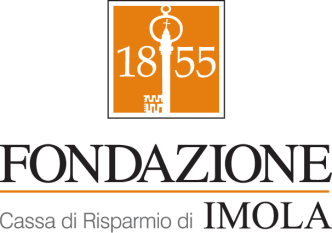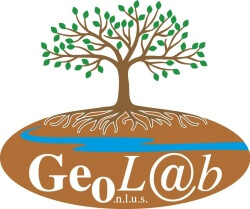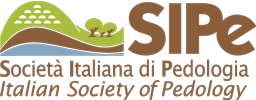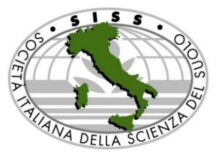GENOTOXICITY AND BIOCONCENTRATION OF POLYCYCLIC AROMATIC HYDROCARBONS AND HEAVY METALS IN LEUCISCUS CEPHALUS FROM PESCARA RIVER (ABRUZZO - ITALY): AN INTEGRATED APPROACH
DOI:
https://doi.org/10.6092/issn.2281-4485/3791Keywords:
freshwater, bioconcentration, polycyclic aromatic hydrocarbons, heavy metals, Ames test, micronucleus testAbstract
The aim of the present study was to investigate the water quality and the ecosystem health of a segment of Pescara river (Abruzzo-Italy) with the aid of an integrated approach. Sixteen priority polycyclic aromatic hydrocarbons and heavy metals were determinated in water and chub samples in order to calculate the bioconcentration factor. Biochemical, physical and microbiological characterisation were also carried out on water samples. Moreover, real and synergic effects of water pollution on biota were investigated by genotoxicological tests. Water samples were tested by Salmonella mutagenicity assay, whereas micronucleus assay on chub was used to evaluate environmental genotoxic effects on fish. The characterisation of water samples did not reveal any relevant contamination of Pescara river, but some analytical results obtained for biota were remarkable. In particular, the comparison between the site downstream from the industrial area of Chieti and the control site showed significant differences in chub micronuclei frequencies.
References
AL-SABTY K. E METCALFE C.D. (1995) Fish micronuclei for assessing genotoxicity in water. Mutation Research, 343: 121–135.
ANYAKORA C., OGBECHE A., PALMER P., COKER H. (2005) Determination of polynuclear aromatic hydrocarbons in marine samples of Siokolo Fishing Settlement. Journal of Chromatography A, 1073: 322-330.
APAT – IRSA – CNR (2003) Metodi Analiti per le acque. Manuali e linee guida 29/2003.
APAT – IRSA – CNR (2005) Valutazione della genotossicità di inquinanti in ambienti acquatici Messa a punto di metodi per l'esecuzione del test del micronucleo in eritrociti di specie ittiche. Manuali e linee guida 32/2005.
ATTRILL, M.J., DEPLEDGE, M.H. (1997) Community and population indicators of ecosystem health: targeting links between levels of biological organization. Aquat. Toxicol. 38, 183–197.
EPA Method 3500C. (2007) Organic extraction and sample preparation. Revision 3.
EPA Method 3540C. (1996) Soxhlet extraction. Revision 3.
EPA Method 3600C. (1996) Cleanup. Revision 3.
EPA Method 3630C. (1996) Silica gel Cleanup. Revision 3-
EPA Method 8270D. (2007 Semivolatile organic compounds by gas chromatography mass spectrometry (GC-MS). Revision 4.
EN 14546:2005. Foodstuffs – Determination of trace elements – Determination of total arsenic by hydride generation atomic absorption spectrometry (HGAAS) after dry ashing. European Standard.
ISTITUTO SUPERIORE DI SANITÀ (1996) Metodi di analisi utilizzati per il controllo chimico degli alimenti. ISTISAN Rapports 96/34..
JONES R.P. ET AL. (2006) Microscale analytical methods for the quantitative detection of PCBs and PAHs in small tissue masses. Chemosphere 62:1795-1805 (2006).
KUTLU M, AYDOGAN G., SUSAZ F., OZATA A. (2004) The Salmonella mutagenicity of water and sediments from the Porsuk River in Turkey. Environmental Toxicology and Pharmacology 17: 111-116.
PEREIRA T., ROCHA J., DUCCATTI A., SILVEIRA G., PASTORIZA T., BRINGUENTI L., VARGAS V. (2007) Evaluation of mutagenic activity in supply water at three sites in the state of Rio Grande do Sol, Brazil. Mutation Research 629: 71-80.
SIDDIQUI A.H., AHMAD M. (2003) The Salmonella mutagenicity of industrial, surface and ground water samples of Aligarh region of India. Mutation Research, 541:21-29.
VIVES I., GRIMALT O., FERNANDEZ P., ROSSELAND B. (2004) Polycyclic aromatic hydrocarbons in fish from remote and high mountain lakes in Europe and Greenland. Science of the Total Environment 324:67-77.
Downloads
Published
How to Cite
Issue
Section
License
Copyright (c) 2010 Federica Piccoli, Luna K Dragani, Carmen Verri, Nicola Celli, Roberto Calabrese, Rino Marchetti, Claudio Pantani, Tommaso Pagliani
Copyrights and publishing rights of all the texts on this journal belong to the respective authors without restrictions.
Articles published since 2020 are licensed under a Creative Commons Attribution 4.0 International License:
Previous articles are licensed under a Creative Commons Attribution-NonCommercial 3.0 Unported License:











